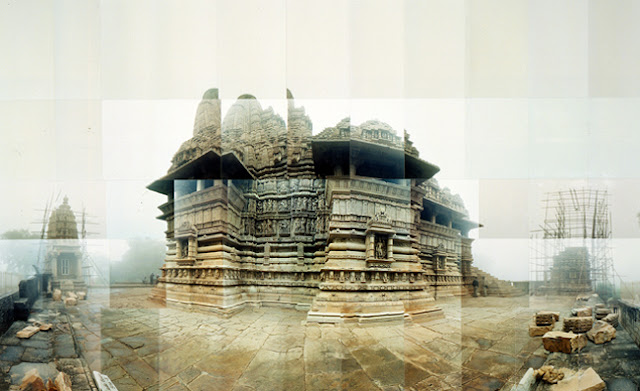Dr. Masumi Hayashi (September 3, 1945 – August 17, 2006) was an American photographer and artist who taught art at Cleveland State University, in Cleveland, Ohio, for 24 years. She won a Cleveland Arts Prize; three Ohio Arts Council awards; a Fulbright fellowship; awards from National Endowment for the Arts, Arts Midwest, and Florida Arts Council; as well as a 1997 Civil Liberties Educational Fund research grant.
Dr. Hayashi created a large body of fine art "panoramic photo-collage" or photo collage involving shots taken on a tripod in successive rings, and later assembled as a more-or-less than 360 degree view. Of the over 200 pieces she created in this format, primary subject matter generally fit into the following series: WWII internment camps of Americans of Japanese ancestry, post-industrial landscapes, EPA Superfund sites, abandoned prisons, war and military sites, commissions, city works, and sacred architectures. In 2004, she launched Masumimuseum.com, which is now an online archive of her work.



Hayashi's works are represented in numerous public and private collections, including the International Center of Photography (NYC), Tokyo Metropolitan Museum of Photography, Los Angeles County Museum of Art, the Cleveland Museum of Art, the George Eastman House in Rochester, New York, the Columbus Museum of Art, the Victoria and Albert Museum in London, and the Ludwig Forum for International Art in Koblenz, Germany.


Masumi Hayashi was born in 1945 in the Gila River War Relocation Camp in Rivers, Arizona, one of the United States government's War Relocation Authority camps, where Japanese-Americans were placed in internment during World War II. The Gila River camp was in the Gila River Indian Reservation.
Hayashi grew up in the Watts neighborhood of Los Angeles, California and graduated from Jordan High School. As an adolescent, she worked at her parents’ store, Village Market, on Compton Avenue. She attended UCLA and later went on to attend Florida State University in Tallahassee, where she earned a Bachelor's degree in 1975 and Master of Fine Arts degree in 1977.
Hayashi joined the faculty of Cleveland State University as Assistant Professor of Photography in 1982, and became a full professor in 1996. During her tenure at CSU, she received numerous awards, including an Arts Midwest, NEA fellowship in 1987, a Civil Liberties Educational Fund research fellowship in 1997, a Fulbright Grant in 2003, and Individual Artist Fellowships from the Ohio Arts Council on three different occasions. She was awarded the Cleveland Arts Prize for Visual Arts in 1994.


Masumi Hayashi is perhaps best known for creating striking panoramic photocollages, using smaller color photographs (typically 4-by-6-inch prints) like tiles in a mosaic. Many of these large panoramic pieces involve more than one hundred smaller photographic prints; the rotational scope of the assembled collage can be 360 degrees or even 540 degrees. Much of her work explores socially uncomfortable spaces, including prisons, relocation camps, and Superfund cleanup sites.Later in her career, her artwork reflected a deep interest in sacred sites, and she traveled several times to India and other places in Asia, to photograph spiritually significant spaces.Wikipedia




















































